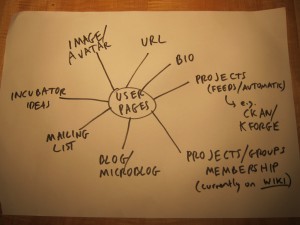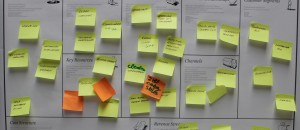
Make your KPIs SMART
At the outset of planning any digital project you should consider what outcomes or results indicate success. The most common way of doing this is to select a set of KPIs (key performance indicators). By monitoring your KPIs you can see if you are on track to meet your goals or way off mark.
When establishing your KPIs you should always make them SMART. That is…
- Specific
- Measurable
- Achievable
- Relevant
- Time-based
I’ll go through each of these in more detail and provide examples below.
Specific
At the top level KPIs should be particular to the business or organisation. If you work in-house this will be relatively simple but if you are an agency you need to work with your client to ensure the indicators are business specific.
An example of a specific KPI for an online retailer might be to increase sales, whilst for a charity website it could be to increase the number of registrants to a sponsored fun run. On the other hand, the PR department of a travel agent might have spent a lot of time and effort to produce news articles for their website but their downloads might not necessarily be specific to the business and wouldn’t constitute a KPI.
Measurable
KPIs must be measurable otherwise you won’t be able to determine if your activity is being successful or not. Although qualitative data such as satisfaction scores can be used, objective, quantitative measures are best. They are difficult to argue with whereas qualitative indicators are open to interpretation.
For example, you may define the reduction of the homepage’s bounce rate to 30% or less as a KPI. This is a clear cut, definite statistic that can be found from your analytics software. Whereas, asking users how pleasing they find a web page design can lead to misleading results; what does pleasing mean? Aesthetic design? Content? Usability? It could be all or any of them.
Achievable
It is unlikely that your new site design will increase traffic tenfold in the first three months, or that a new iPhone app will increase sales by 75% so don’t be tempted use such improbable results as KPIs. Instead choose indicators that are genuinely achievable.
Clients or senior management often expect digital tools to be wonder solutions that will provide massive returns, but by keeping your success criteria realistic you will be able show a true reflection of performance and also manage the client’s or stakeholder’s expectations.
Relevant
Your digital activity will usually form part of a wider communications plan that may include multiple online and offline channels which are intended to add to the success of the organisation. It is important, therefore, that any KPIs mirror this plan.
For example, if your company (or client) was running a campaign to raise awareness of their new brand of catfood, your digital KPIs might be to achieve 200 or more downloads of information sheets per month. The number of job applications received through the website, though, would be irrelevant.
Time-based
KPIs should be measured over a pre-defined period. This could be for a certain number of months or for the duration of a particular activity. An example might be to receive 1,000 enquiry form submissions for the first quarter of the financial year. Or to achieve 300 downloads of a weight-loss app during a summer slimming campaign.
To summarise
Setting KPIs allows you to manage the progress of a digital campaign or activity. They help identify areas that aren’t gaining the expected results or, conversely, those that are seeing greater than expected interest.
By keeping those KPIs SMART (specific, measurable, achievable, relevant and time-based) you make sure that they are pertinent to the business and it’s current communication strategy, that they refer to activities that are possible within a specific time frame and that there is no ambiguity in how they report progress to project stakeholders.




